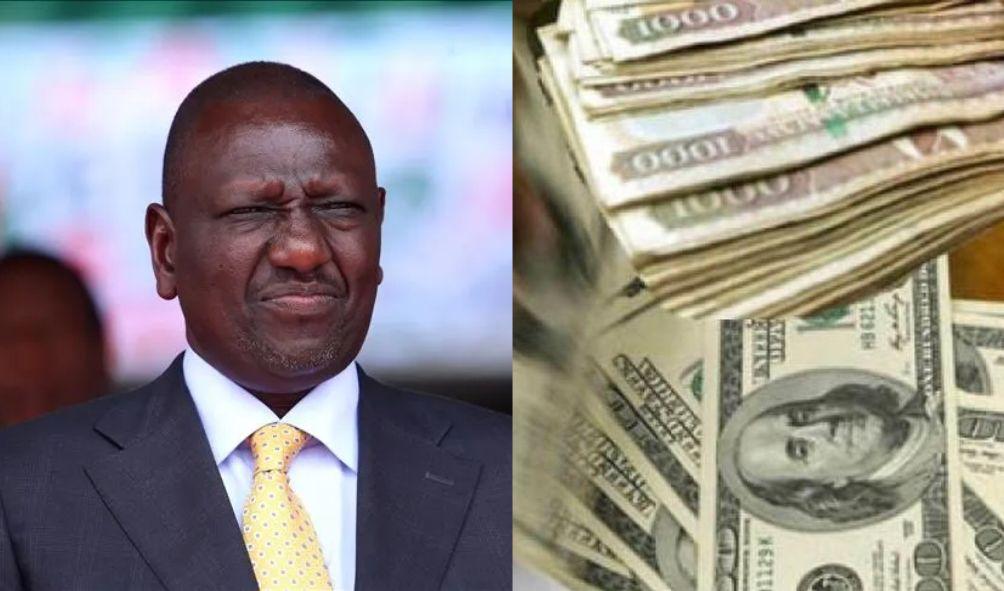Kenya Shilling Weakness vs. Dollar: Ruto’s Oil Deal Explained
Despite the government-to-government oil deal between Kenya and the Kingdom of Saudi Arabia, Kenyans have taken to social media to express concern over the continued depreciation of the Kenyan shilling against the US dollar.
In March, Energy Cabinet Secretary Davis Chirchir announced that Kenya would receive oil from the Middle East at low prices.
On April 11 at the Nairobi Securities Exchange, the President stated, “Within the next month or so, the dollar exchange rate will drop phenomenally. In fact, according to my estimation, the exchange rate will fall below Ksh.120, perhaps even Ksh.115, within the next few months.”
However, it appears that nothing has changed:
Vincent Kimosop, a policy and governance expert and the CEO of Sovereign Insight, explained three reasons why the oil deal did not save the Kenyan shilling’s value.
Imports of High-Value Goods
“We continue to import more, particularly using dollars in the sourcing regions.
“Kenya is importing high-value goods for consumption,” said Kimosop.
This boosts the dollar’s demand because companies want to pay foreign firms when they import.
According to the Kenya National Bureau of Statistics (KNBS) Economic Survey 2023, in 2022 Kenya imported non-food industrial supplies worth Ksh923 billion and fuel and lubricants worth Ksh647 billion.
ALSO READ: Wishing Raila as President: Former IEBC Chair’s Statement
Low-Value Exports
He stated, “The performance of our exports is significant.”
This indicates Kenya is purchasing more and selling less, resulting in decreased dollar inflows.
The top two exports of Kenya, according to the KNBS Economic Survey 2023, were tea and horticultural products.
Tea generated Ksh163 billion while horticulture generated Ksh152 billion.
Policy Time Lag
“There is also the issue of policymaking delays, which impacts the G2G policy,” he stated.
While in Mombasa, Vice President Rigathi Gachagua received the first shipment of oil from the Middle East.
The Energy Cabinet Secretary (CS) Davis Chirchir stated on April 27 that Kenya had not yet used oil from the Middle East because there were still stocks on the market.
Remittances
Kenya relies heavily on remittances from Kenyans living abroad for dollar availability.
KNBS reported that remittance inflows increased by 15.8% from 2021 to 2022, reaching KSh 478.5 billion.
According to data released in January 2023 by the Central Bank of Kenya (CBK), diaspora remittances increased by 8.34 percent to Ksh552 billion in 2022.
The United States (US), the United Kingdom (UK), and the Kingdom of Saudi Arabia (KSA) are the top three countries for remittances.
United States: Ksh275 billion; United Kingdom: Ksh39 billion; Saudi Arabia: Ksh35 billion. The United States accounts for 58% of Kenya’s remittances.
Global supply and demand determine the price of crude oil. West Texas Intermediate (WTI) and Brent Crude are two widely used oil benchmarks.
The Energy and Petroleum Regulatory Authority (EPRA) announced on May 14 that petrol costs Ksh182.70, diesel costs Ksh168.40, and kerosene costs Ksh161.13.
On May 17, the Kenyan shilling fluctuated between Ksh137 and Ksh141 per dollar.
Kenya Shilling Weakness vs. Dollar: Ruto’s Oil Deal Explained
HEY READER. PLEASE SUPPORT THIS SITE BY CLICKING ADS. DON’T FORGET TO HIT THE NOTIFICATION BELL FOR MORE UPDATES AROUND THE GLOBE.
